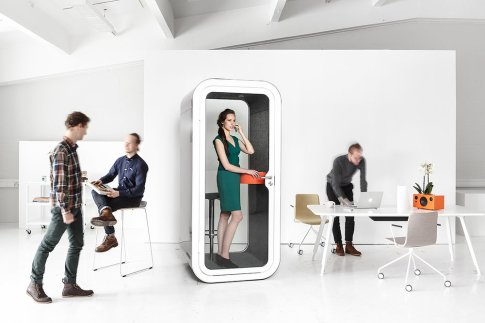Pros and Cons of Working Remotely
The average person spends 55 minutes per day commuting to work in Los Angeles and a daily average of $16 on commute costs — higher than that of any other U.S. city. It’s no wonder more and more employees are pushing for flexible schedules in their job positions and employers are becoming more open to their employees working from home at least once a week. According to a Gallup study, 37% of employees did some or all of their work at home in 2015. This is a slight increase from 30% last decade, and a huge increase from 9% in 1995. So, why are more and more people working from home?
There are ample benefits of working remotely. Studies have shown that employees are more productive and have higher work satisfaction when they have the option to work from home periodically, especially when tackling more administrative tasks. Employees who need to accomplish tasks on a deadline work better in environments that free them from office distractions and interruptions, allowing them to better focus on their work tasks at hand. Furthermore, greater flexibility of work schedules allows employees to run their necessary errands and take care of their kids and pets, which decreases scheduling stress and fosters wellness. It gives the employee ultimate control over their schedule while being held accountable for the work that needs to get done.
While working from home certainly has its perks, there are pertinent considerations to keep in mind. With less time in the office, employees reported greater work satisfaction, but a decreased promotion rate due to less visibility in the workplace. Along with this lack of recognition when working remotely, many employees found communicating and collaborating with co-workers very limiting when they could not do so face to face. Thus, having a physical office space plays an integral role in developing and maintaining team cohesion on both a professional and personal level.
The ‘modern’ workspace is often open, collaborative, and non-exclusive. While open-floor plans can foster more collaboration and innovation, employees are often concerned about being distracted. This implies that companies need to incorporate different types of spaces to accommodate various work habits. For example, employers can provide quiet zones for uninterrupted spaces to work. CBREheadquarters has several “offices for a day” people can reserve for less distractions. Similarly, Rising does not have assigned work stations and instills a comfortable home-like feeling in the office space. Communal spaces, like Rising’s living room and kitchen area, allow employees to move around and work in different areas, supporting innovation and improving employee relationships. When extreme focus is required, Rising provides one-person call rooms and has soundproof private booths from Framery that give employees a space to concentrate without distractions.
As more and more studies demonstrate the relationship of environment to energy levels, people realize changing their location has significant impacts on their productivity levels. Every Rising property is equipped with 5×5 Telecom‘s Connected Square Footage (TM) allowing employees and guests access their companies’ secure Wi-Fi network anywhere on/near the property. This gives the option to work at a nearby coffee shop or restaurant if they need to get out of the office for a change of scenery, and it gives the employer peace of mind knowing that their employees are on their own secure Wi-Fi.
Technology continues to offer solutions for communicating that were not possible a few years ago. We live in a hyperconnected world, which allows us to answer emails or jump on a video conference while in another country. Given the technologically advanced world we live in, developments in telecommunications will progressively provide the means to work from anywhere. Continued improvements in virtual and augmented reality will replace many elements of human interaction vital to the creative process. In fact, there are major tech companies that are heavily investing in these areas – companies like Google, Apple, Samsung, Facebook, Alibaba, HTC, Qualcomm and Cisco. There is little doubt such innovations will give people the chance to be “in the office” virtually. It isn’t hard to imagine weekly or monthly meetings with your entire company sitting in a virtual conference room. Just as the telex and fax machine were major advances in the business process, these new technologies will expedite and ease work tasks and processes.
However, while these technological advances make the business of doing business “easier,” I still believe companies will need an office space where genuine face-to-face interactions can happen. The creative process demands human interaction. We know financial transactions can be done electronically in microseconds, but discussion over a creative path to solve a problem benefits exponentially by being right next to a person. Those creative collisions are not yet possible via hologram. Further, these same tech companies are building new campuses, improving existing ones, and setting a standard for the way business interacts with their employees. It is hard to believe these companies would make such investments if the office was soon to be a digital representation in your living room.
We believe it is our responsibility to continue to implement all the benefits of technology for businesses and the people who drive those businesses. Technology alone will not create the ideas that are the basis for the business and the innovation which drives success. Thus, we believe the office will be a part of business, and its workplace will reflect the creativity, and quite frankly, the success of that business.

